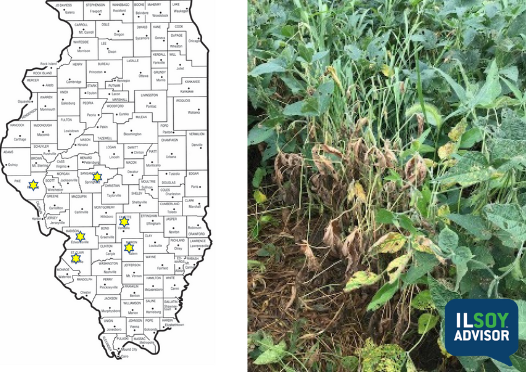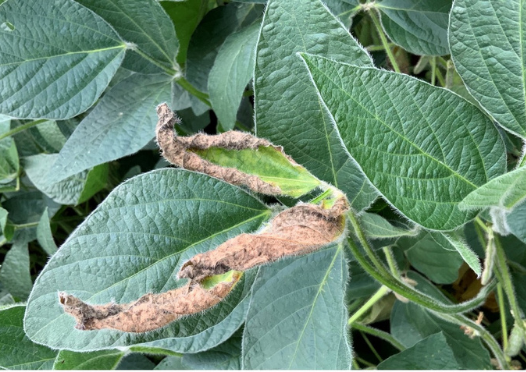ILSOYADVISOR POST
Disease Management: 2016 Forecast for Sudden Death Syndrome in Early Planted Soybeans
Many are all too aware of Sudden Death Syndrome (SDS). We usually don’t worry about this disease until later in the season, when we can see yellow patches out in the soybean field from the truck window. In reality, this disease could be lurking in your soybean field now as thick-walled, fungal survival structures and infecting your soybean seedlings as you read this.
2014 will forever be known in Illinois as one of the worst years for Sudden Death Syndrome infection of soybeans. That’s because early in the season during the soybean vegetative growth stages, soil conditions were cool, wet and “just right” for the fungal pathogen that causes SDS to colonize the soybean root cortex (outer root). In 2014 most growers planted in early May when Mother Nature brought air and soil temperatures around 60 degrees (or cooler), just perfect for SDS infection. Conditions remained favorable, and the SDS pathogen grew farther into the center of soybean roots, into the vascular tissue, and then took up residence in the lower stem, disrupting water and nutrient uptake and flow. The pathogen produced toxins that moved to the top of the plant and, after a significant rainfall, caused leaf symptoms to appear. After leaf symptoms appeared, leaves fell from the plant, depending on soybean variety susceptibility.
Though some soybean varieties are rated as having resistance to this disease, there is no variety that is totally resistant to SDS. I do believe that many seed companies and growers are paying more attention to SDS disease resistance scores after 2014. Many are also turning to new seed treatments that offer protection against SDS as well as soybean cyst nematode (SCN). Often times, but not always, SDS infects soybeans that also have been infested with SCN. Soybean fields that are most at risk are low-lying areas or compacted areas that are poorly drained and can collect water. We also observed that there appeared to be disease severity differences according to tillage versus no tillage. However, the key to the impact of this disease is environmental conditions early in the season.
In 2016 only a small percentage of soybeans in Illinois were planted in late April up to mid May. The question is how similar the weather conditions were in 2016 compared to 2014. Thanks to the Midwestern Regional Climate Center, I was able to compare the average temperatures and accumulated rainfall and you can see the results below. This comparison is not exact by any means, but the environmental conditions during the early seasons of 2014 and 2016 look very similar in terms of temperature and moisture.
As most know, we can’t look into a crystal ball and see for certain the soybean disease future, but thus far, 2016 has brought us very favorable conditions for SDS infection in early planted soybeans. However, many acres of soybeans were also planted very late, after May 15, and that may help. Ultimately, soybean yield loss will depend on future environmental conditions, soybean variety, SDS onset and severity.


Stephanie Porter is a Sales Agronomist with Burrus® Hybrids with responsibilities that include educating growers and Burrus staff on all types of pests, weeds, diseases and other agronomic issues that affect corn, soybean and alfalfa production. Her territory encompasses Southern Wisconsin as well as Northern, Eastern and Southern Illinois.




Comments
Add new comment